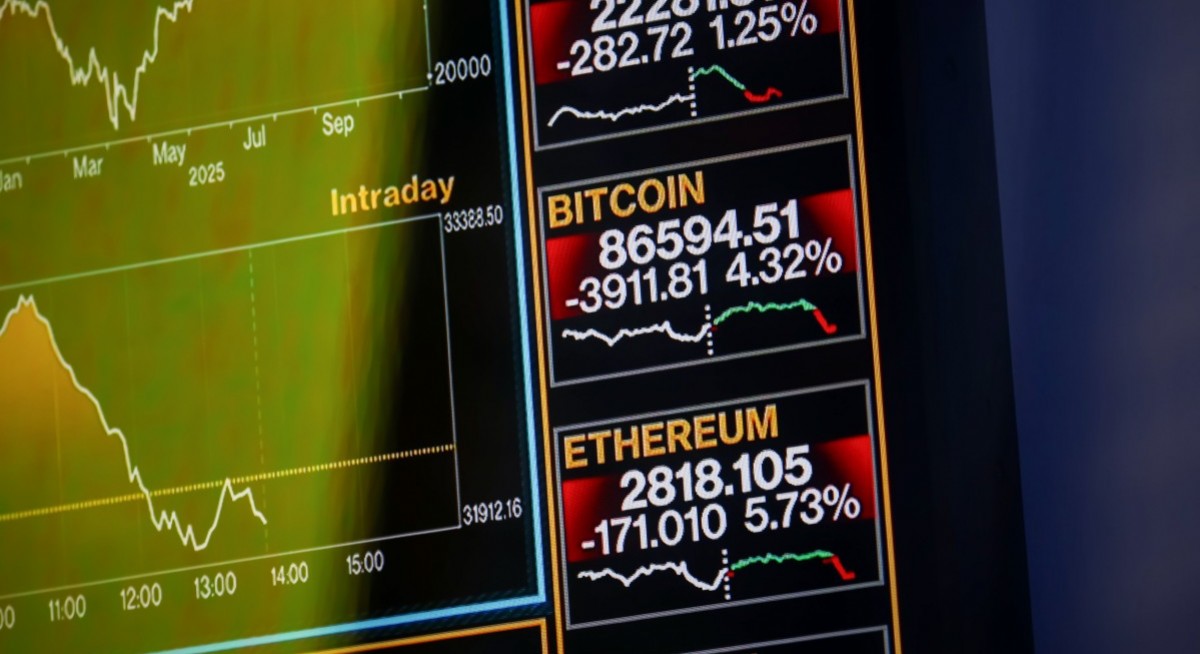(Nov 21): Stocks in Asia were set to decline after a turbulent session on Wall Street, where a brief Nvidia Corp-led relief rally quickly faded and investors pulled back from riskier assets such as cryptocurrencies.
The Nasdaq 100 tumbled 2.4% and the S&P 500 1.6%, wiping out gains of roughly 2% earlier with questions lingering about stretched stock prices and hefty investments. While Nvidia reassured investors on AI demand, the stock fell 3.2%. Equity-index futures for Japan, Hong Kong and Australia all signaled a weak open.
The Cboe Volatility Index rose as high as 28, above the key 20 level that causes concern for traders, just as bitcoin sank below US$87,000 ($113,695) for the first time since April.
Growing scrutiny over whether AI investments were generating sufficient revenue and profits to justify the surge in infrastructure spending continued to drive market swings. Adding to the unease was persistent uncertainty over the Federal Reserve’s ability to cut interest rates next month, as recent remarks from policymakers signaled caution about easing policy too soon.
“Is AI going to be as profitable as the market is pricing in? That’s the key question,” said Matt Maley, the chief market strategist at Miller Tabak + Co LLC. Traders are worried about whether AI investments now would be profitable in five years, he added. “As a result, people are saying, ‘I have got to take some chips off the table.’”
Thursday also brought the release of a long-delayed government employment report, which showed that US job growth picked up in September, while the unemployment rate ticked higher.
See also: Slippery when wet from high liquidity
The data suggested the labour market showed signs of stabilising before the government shutdown. The figures come a day after minutes from the Fed’s last policy meeting showed a divided committee on whether to cut rates again.
Fed governor Michael Barr said the US central bank needs to proceed with caution in considering additional rate cuts with inflation still running above the target. Following fresh jobs data, Barr said he sees the labour market “kind of cooling”, with the economy creating jobs near the so-called break-even pace that keeps unemployment steady.
Fed Bank of Cleveland president Beth Hammack said lowering rates to support the labour market could extend the period of above-target inflation and increase financial stability risks. Her Chicago counterpart Austan Goolsbee signaled that he’s still apprehensive about delivering another rate cut at the central bank’s December meeting.
See also: Philippine tycoon loses US$16b as property fortune wilts in three days
Investors now see a less-than-40% probability of a rate cut at the December meeting, according to pricing in futures contracts. Treasury two-year yields slid six basis points to 3.53%. The dollar edged up.
“At first glance, September’s headline payroll gain appears reassuring, but a closer look reveals that job growth remained fragile and narrowly concentrated heading into the longest government shutdown on record,” EY-Parthenon senior economist Lydia Boussour said in a note.
In Asia, Japan may be closer to intervening in the currency market than many investors assume.
Prime Minister Sanae Takaichi’s pro-stimulus policies might deter the Bank of Japan from hiking its benchmark rate in the near term at a time when bets on a Fed cut have receded. Takaichi is set to unveil a stimulus package that will include ¥17.7 trillion ($146.96 billion) of spending, according to documents seen by Bloomberg on Thursday.
Meanwhile in commodities, oil fell after Ukrainian President Volodymyr Zelenskiy said he agreed to work on a peace plan drafted by the US and Russia aimed at ending the war in Ukraine. Gold slipped on the uncertainty of Fed interest rate cuts in December.
Uploaded by Isabelle Francis




